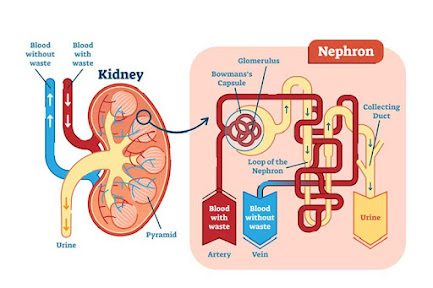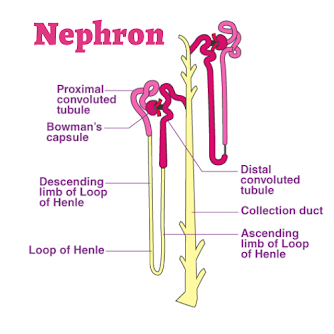Neuron
Nerve cell or neuron is the unit of the nervous system. The human nervous system consists of billions of neurons plus supporting cell. Neuron are the specialized cells that are able to conduct nerve impulses from receptors to coordinators and from coordinators to effectors. In this way the communicate with each other and with other types of body cell.
Location:
The nucleus and most of the cytoplasm of neurons is located in the cell body.
Dendrites & Axons:
Different processes extend out from the cell body. These are called dendrites and axons.
Dendrites conduct impulses towards cell body and axons conduct impulses away from the cell body.
Schwann cells:
Schwann cells are special neurological cells located at regular intervals along axons, In some neurons Schwann cell secrete fatty layer called myelin sheath.
Nodes of Ranvier:
Between the areas of myelin on an axon, there are no myelinated points called Nodes of Ranvier.
Saltatory:
Myelin sheath is an insulator so the membrane coated with this sheath does not conduct nerve impulse. In such impulses are called saltatory (jumping) impulses. This increases the speed of nerve impulse.
On the basis of the function, neuron are of three types.
- Sensory neurons
- Interneurons
- Motor neurons
Conduct sensory information (nerve impulse) from receptors towards the CNS. Sensory neurons have on dendrite and one axon.
Interneuron:
From brain and spinal cord. They receive information, interpret them and stimulate motor neurons. They have many dendrites and axons.
Motoneuron:
Carry information from interneurons to muscle or glands (effectors). They have many dendrites but only one axon.
Nerve
A nerve means the union of several axons that are enveloped by covering made of lipid.
Classification:
- Sensory nerve
- Motor nerve
- Mixed nerve
Contain the axons of sensory neurons only.
Motor nerve:
Contain the axons of motor neurons only.
Mixed neuron:
Contain the axons of both i.e. sensory and motor neurons.





.png)










.png)